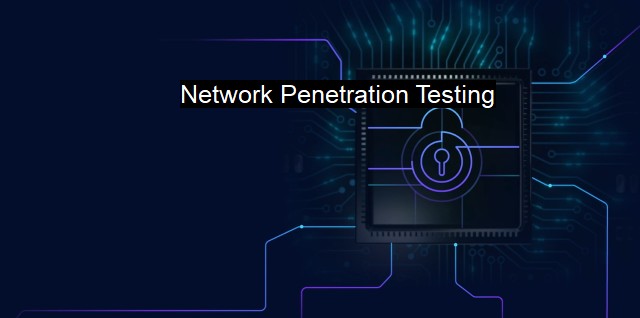What is Network Penetration Testing?
Strengthening Cybersecurity: The Importance of Network Penetration Testing for Businesses and Institutes
Network penetration testing, also known as ethical hacking, involves mimicking the tactics used by potential attackers to identify vulnerabilities in a system. It is designed to assess the security aspects of an ICT (Information and Communication Technology) infrastructure and test it against potential vulnerabilities. This testing is a critical aspect of cybersecurity, revolving around the theory of 'beating hackers at their own game'.In network penetration testing, the tester behaves like a potential attacker and tries exploiting various weaknesses within the system's defenses. These weak spots can be present in the operating system, the misconfigured network devices, or the behaviors of legitimate users.
Penetration testing predominantly offers a multi-faceted appraisal to an organization, and it often revolves around two main objectives. The first is to identify and exploit vulnerabilities in the system. Such weaknesses often come from poorly installed networks, inappropriate security parameters, or even the insignificant encoding errors. The second objective is to create or follow the journey of an attacker and document the steps taken to exploit these vulnerabilities.
This process typically involves four primary stages - planning, conduct, reporting, and follow-up. In the planning phase, the tester pre-defines the scope and goals of the testing process. The tester identifies the systems to be tested, the testing techniques to be used, and the extent to which the tester can exploit the vulnerabilities. Extensive collaboration with the owners of systems at this stage ensures a valid test.
Next, the tester conducts the test using various tools and technology techniques that aid in attacking the systems as a real hacker would. This simulative approach offers clear insights about the various ways a system can be exploited.
Once the test is done, the penetration tester generates a detailed report. This report comprises vulnerability descriptions, offensive strategies used, severity categorizations, recommended mitigation techniques, and industry-standard compliance assessments. The reporting phase contains essential input for the follow-up phase as well. Organizations can use this information for strategizing cybersecurity reinforcement and taking preventive measures.
One of the essential aspects of the penetration test includes antivirus solutions. Antiviruses are often the initial line of defense in the world of cybersecurity. Cybersecurity professionals design these antivirus software with intricate algorithms to detect and eliminate potential threats and protect from them. a penetration tester can reveal to what extent the antivirus solution is effective and suggest additional and more advanced protective measures.
Network penetration testing becomes crucial in a cybersecurity context given today's frequent, increasingly sophisticated security attacks. As attack vectors constantly evolve, it is imperative for organizations to remain proactive in mitigating threats.
Network penetration testing is more than a defense mechanism. It serves as an all-round appraisal of a system’s security architecture. Penetration testing gives organizations with a robust footing to combat both known and unknown future threats to their IT systems. It provides practical insights for enhancing their defense perimeters above mere compliance check-boxes and serves as a wake-up call for delayed patches, misconfigurations and highlights the weak security practices inadvertently followed within an organization. Therefore, for any business reliant on IT infrastructure, network penetration testing isn't just an option, but a vital need. By constantly modifying penetration tests to mirror the rapidly evolving threat landscapes, organizations can land a pre-emptive strike against cyber threats lurking in the corners of the digital world.

Network Penetration Testing FAQs
What is network penetration testing?
Network penetration testing is a systematic process of assessing a network's security by imitating a real-world attack. It is used to identify vulnerabilities and loopholes in an organization's IT infrastructure that can be exploited by hackers.Why is network penetration testing important?
Network penetration testing is important because it helps organizations to identify security weaknesses in their network and take corrective actions before a real attack occurs. It also helps organizations to comply with regulatory requirements and industry standards.What are the different types of network penetration testing?
There are different types of network penetration testing, such as black box testing, white box testing, and gray box testing. Black box testing involves no prior knowledge of the network, white box testing involves full knowledge of the network's architecture, and gray box testing involves partial knowledge of the network.Who should conduct network penetration testing?
Network penetration testing should be conducted by certified and experienced cybersecurity professionals who have specialized knowledge in this area. It is important to engage a reputable third-party firm to perform network penetration testing to ensure objectivity and independence.| | A | | | B | | | C | | | D | | | E | | | F | | | G | | | H | | | I | | | J | | | K | | | L | | | M | |
| | N | | | O | | | P | | | Q | | | R | | | S | | | T | | | U | | | V | | | W | | | X | | | Y | | | Z | |
| | 1 | | | 2 | | | 3 | | | 4 | | | 7 | | | 8 | | |||||||